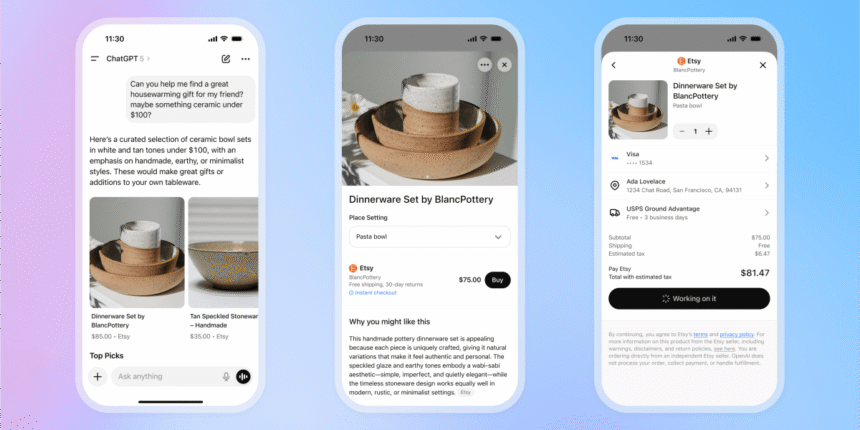But the implications go far beyond OpenAI. Because the protocol is open source, any AI assistant—from Claude and Gemini to TikTok’s AI and xAI—could use the same rails to let users shop within their chatbots. That means conversational shopping could spread across the internet far faster than brands are ready for.
Still, why would OpenAI create a protocol that competitors can use too? ChatGPT product lead Michelle Fradin framed it as a merchant-first calculation: “The primary goal we had was making something incredibly easy for the entire ecosystem—merchants and developers—to adopt,” she said. “So yes, one aspect of that is, competitors or other players in the space can adopt it too.”
At the end of the day, she explained, it’s “net-beneficial” if merchants have to do less work to integrate with different platforms and grow sales. “We felt like the most merchant-friendly approach was making this available to everyone,” she added, noting there was so much demand from merchants that “we needed to build something that could scale.”
To be sure, not every brand or retailer will jump in. Even though ACP is open source, adopting it still means ceding some control of the direct relationship they’ve worked to build with their customers. There’s also the matter of fees: Stripe will take its cut on each transaction, which could be a deterrent for sellers operating on thin margins. But for many companies, especially bigger brands, the frictionless reach of AI shopping may outweigh the loss of control over customer data and brand experience.
To be included in ChatGPT’s search results for Instant Checkout, brands and merchants need to do some work, Fradin noted. That’s because if you want ChatGPT to recommend your product, you have to feed it structured, detailed data that the model can “see” and understand.
For now, Fradin noted that, unlike traditional search engines, where platforms carefully guard algorithms to prevent low-quality content from gaming the system, ChatGPT’s shopping recommendations are entirely AI-driven. There isn’t a fixed formula merchants can optimize against, she explained — instead, the more high-quality product information the model has access to, the more likely it is to surface relevant results.
“We expect to see a lot of evolution in the new version of AIO over time,” she said. “I think we’re just at the beginning of this space.”









